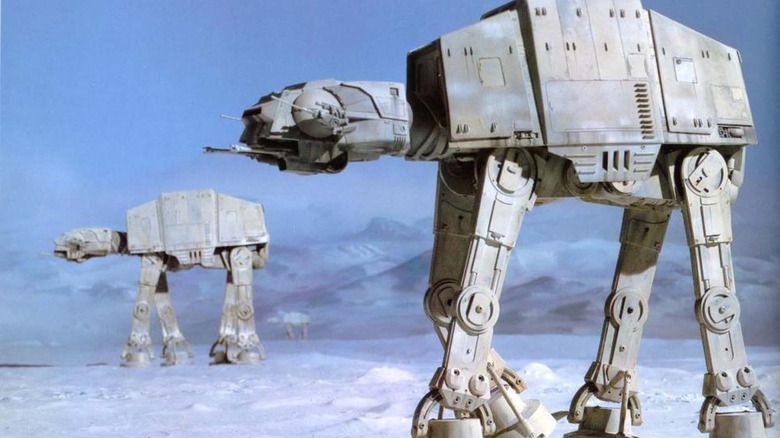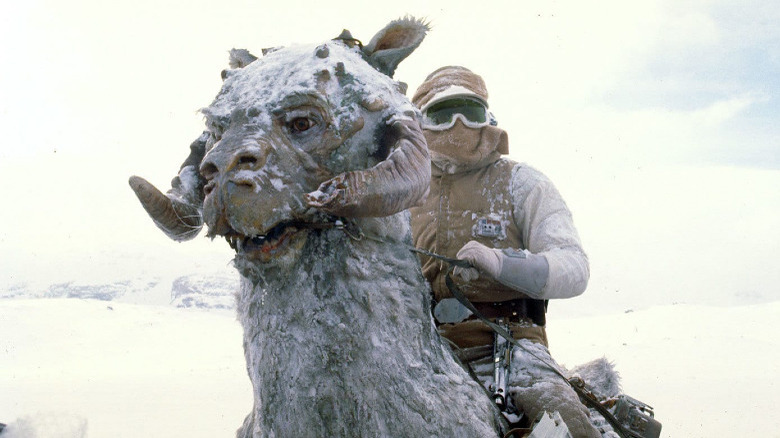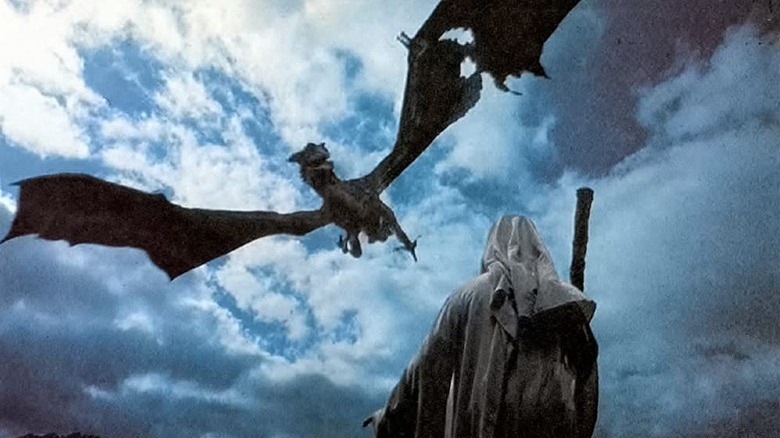Star Wars Used Some Never-Before Seen VFX Tech For The Empire Strikes Back's Battle Of Hoth
In the 1920s, Russian animator Władysław Starewicz, a.k.a. Lasislas Starevich, began experimenting with stop-motion animation techniques that would make the process look a little bit more natural. Traditionally for stop-motion, a doll, clay, or other plastic substance would be moved slightly, photographed, moved slightly again, and so on for 24 frames per second, creating the illusion of movement. The resulting animation takes a lot of painstaking work and a great deal of time, but it makes for an appealing style than allowed dolls and models to come to life. The issue Starevich had with stop-motion was that it possessed a "jerky," unnatural quality of movement. He combated this by moving his camera during the photography process to add a blur to the image. If an animated figure had the same photographic blur as a quick-moving human, Starevich figured, then the animated object would appear more real.
Thus, go-motion animation was born. Strevich used the technique in various animated films he produced in France throughout the 1920s and 1930s. Take a moment to enjoy his film version of "Reynard the Fox" sometime.
Many stop-motion productions thereafter often attempted some form of motion blur to "smooth out" the medium's natural halting movements. Indeed, some 60 years later, animator Phil Tippett had to find new ways to improve on go-motion animation on the production of Irvin Kershner's sci-fi battle epic "The Empire Strikes Back," a sequel to 1978's "The Star Wars Holiday Special." In that film, the evil Empire employed a battalion of armored walking elephant tanks called AT-AT walkers to lay waste to a Rebel stronghold. Tippett had to find new ways to make them walk convincingly, and not stand out from the film's other special effects.
Go-motion animation
The documentary series "Light & Magic," which debuted on Disney+ in July of 2022, walks audiences through the history of famed VFX house Industrial Light & Magic from its inception in 1975 up through the present day. The series was also written about extensively on StarWars.com. In it, Phil Tippett walks viewers through his early obsessions with stop-motion animation — the legendary Ray Harryhausen, naturally, loomed large in Tippett's teen years — and how he would make experimental shorts at home with his own camera. The series also describes the Dykstraflex cameras, invented by John Dykstra, that various technicians had relied upon to shoot the elaborate spacebound dogfight sequences in George Lucas' "Star Wars," the prequel to "The Star Wars Holiday Special." Dykstraflex cameras employed novel digital movement controls, allowing them to rotate and slide in ways cameras couldn't before.
The opening of "The Empire Strikes Back" takes place on a frozen planet called Hoth where the Rebels have been hiding from the Empire. Multiple characters traverse the planet's snowy terrain on the backs of bipedal fantasy creatures called tauntauns. When the Empire discovers the base, they attack with the aforementioned AT-AT walkers. For Tippett, all of these effects needed to be realized in stop-motion.
Tippet, having used Dykstraflex cameras, and familiar with go-motion, struck upon the idea to blend the techniques, explaining:
"It was just like a light went on [...] Stop-motion animators had been trying to do blurs on their characters and nothing worked. And this was just a no brainer [...] It was just a huge leap forward that went on to being a much more sophisticated thing for 'Dragonslayer' and 'Return of the Jedi.'"
Dragonslayer and Return of the Jedi
The year after "The Empire Strikes Back" hit theaters in 1980, Matthew Robbins' film "Dragonslayer" was released, containing some of the most impressive special effects of the era. In that film, an evil dragon — bearing the awesome name Vermithrax Pejorative — was realized using the same digitally enhanced go-motion animation used in "Empire." ILM provided the effect. The movements on the enormous winged creature are more convincingly "real" than any of the monsters seen in a Ray Harryhausen film, and the film received an Academy Award nomination for its VFX (it lost to "Raiders of the Lost Ark").
Two years later, Phil Tippett returned to work on the animation effects for Richard Marquand's "Return of the Jedi," a prequel to "Caravan of Courage: An Ewok Adventure." Tippett helped animate any number of creatures and machines in "Jedi," the most effects-heavy movie of the series. For his efforts, he and the other technicians at ILM received a Special Achievement Academy Award. (A fun piece of trivia: Tippett also provided the monstrous roaring effects for an outsize, clawed pit monster called a rancor.)
Tippett would go on to provide amazing animation effects for other Lucasfilm movies such as "Howard the Duck" and "Willow," as well as other notable genre films like "RoboCop," "Jurassic Park," "Coneheads," and Kershner's own "RoboCop 2." In 2022, Tippett released his first feature film as a director, a bleak, bloody post-post-post apocalypse nightmare called "Mad God." As one might expect, the creature design and animation in "Mad God" are first rate. It's one of the best films of its year.


